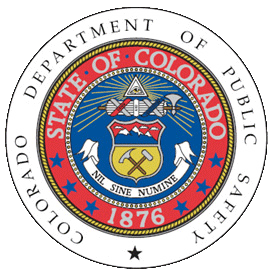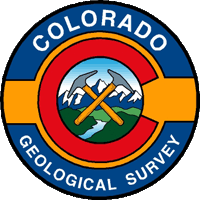- ▾ Other ShakeOuts ▾
- Alaska
- American Samoa
- Arizona
- British Columbia
- California
- Central U.S. (AL AR IA IL IN KS KY LA MO MS NE OH OK TN)
- CNMI
- Colorado
- Guam
- Hawaii
- Idaho
- Japan
- Montana
- Nevada
- New Mexico
- New Zealand
- NorthEast U.S. (CT MA ME NH NJ NY PA RI VT)
- Oregon
- Puerto Rico
- Quebec & Eastern Ontario
- SouthEast U.S. (DC DE FL GA MD NC SC VA WV)
- Texas
- Upper MidWest U.S. (MI MN ND SD WI)
- U.S. Virgin Islands
- Utah
- Washington State
- Wyoming
- Yukon
- Other Countries

Why Should You Participate?
Each time an earthquake occurs in Colorado, the news media and public asks, “Does Colorado have earthquakes?” Short answer: Yes!
In comparison with California, Nevada, and Utah, major earthquakes here are infrequent. But each year, hundreds of earthquakes do occur in and around Colorado. Taking steps now to prepare your family and home will help mitigate the effects of moderate to severe earth shaking.
The Great Colorado ShakeOut is an annual opportunity to practice how to be safer during big earthquakes: "Drop, Cover and Hold On." The ShakeOut has also been organized to encourage you, your community, your school, or your organization to review and update emergency preparedness plans and supplies, and to secure your space in order to prevent damage and injuries.
Learn more below, or read answers to frequently asked questions.
Benefits
Register today so that you or your organization will:
- Be counted in the largest-ever earthquake drill in Colorado!
- Be listed with other participants in your area (Optional)
- Be an example that motivates others to participate & prepare
- Be updated with ShakeOut news and preparedness tips
- Have peace of mind that you, your family, your co-workers and millions of others will be better prepared to survive and recover quickly from our next big earthquake!
EARTHQUAKE HAZARDS
Most people are surprised to learn that natural earthquakes occur in Colorado!
They are even more surprised to learn that we experienced a magnitude 6.6 earthquake in 1882.
Colorado is most famous in the earthquake literature for the swarm of earthquakes during the 1960s that were triggered by pumping waste fluids down a well at the Rocky Mountain Arsenal. All of this contributes to a false sense of security concerning the possibility of a damaging earthquake(s) occurring in Colorado.
The Colorado Geological Survey (CGS) as developed a number of informative publications, including their Earthquake RockTalk and a Colorado Earthquakes video.
Several potentially active faults in Colorado are thought to be capable of causing earthquakes as large as magnitude 6.5 to 7.5. In comparison, California has hundreds of hazardous faults, some of which can cause earthquakes of magnitude 8 or larger. The time interval between large earthquakes on faults in Colorado is generally much longer than on faults in California. The USGS's Earthquake Hazards Map (2018) provides more detailed information.
Past and Possible Future Earthquakes
More than 700 earthquake tremors of magnitude 2½ or higher have been recorded in Colorado since 1867. More earthquakes of magnitude 2½ to 3 probably occurred during that time, but were not recorded because of the sparse distribution of population and limited instrumental coverage in much of the state. For comparison, more than 20,500 similar-sized events have been recorded in California during the same time period. The largest known earthquake in Colorado occurred on November 7, 1882 and had an estimated magnitude of 6.6. The location of this earthquake was probably in the northern Front Range west of Fort Collins.
The Denver Earthquakes
The most economically damaging earthquake in Colorado’s history occurred on August 9, 1967 in the northeast Denver metropolitan area. This magnitude 5.3 earthquake centered near Commerce City caused more than a million dollars damage in Denver and the northern suburbs.
This earthquake is believed to have been triggered by the deep injection of liquid waste into a borehole at the Rocky Mountain Arsenal. It was followed by an earthquake of magnitude 5.2 three months later in November 1967.
Although these events cannot be classified as major earthquakes, they should not be discounted as insignificant. They occurred within Colorado’s Front Range Urban Corridor, an area where nearly 75% of Colorado residents and many critical facilities are located. Since March 1971, well after the initial injection of fluids ceased, 15 earthquakes of approximate magnitude 2½ or larger have occurred in the vicinity of the northern Denver suburbs. At least two published articles propose that a magnitude 6.0 earthquake is possible on the fault that passes under the Arsenal. Such an earthquake would cause more than $10 billion dollars damage. This would be Colorado's Katrina - the event that we know is possible, but are not necessarily prepared for.
Summary and Conclusions
Relative to other western states, Colorado’s earthquake hazard is higher than Kansas or Oklahoma, but lower than Utah and certainly much lower than Nevada and California. Even though the seismic hazard in Colorado is low to moderate, it is likely that future damaging earthquakes will occur.
Based on the historical earthquake record and geologic studies in Colorado, an event of magnitude 6.5 to 7.5 could occur somewhere in the state. Scientists are unable to accurately predict when the next major earthquake will occur in Colorado only that one will occur. The major factors preventing the precise identification of the time or location of the next damaging earthquake are the limited knowledge of potentially active faults and the relatively short historical record of Colorado earthquakes.
Given Colorado’s continuing active economic growth and the accompanying expansion of population and infrastructure, it is prudent to continue the study and analysis of earthquake hazards. Existing knowledge should be used to incorporate appropriate levels of seismic safety in building codes and practices. The continued and expanded use of seismic safety provisions in critical and vulnerable structures and in emergency planning statewide is also recommended. Concurrently, we should expand earthquake monitoring, geological and geophysical research, and mitigation planning.
Please visit the following links for more information on earthquakes hazards and preparation:
Colorado Division of Homeland Security and Emergency Management
Colorado Earthquake Hazard Mitigation Council
Colorado Office of Emergency Management
USGS Colorado Earthquake Information
Colorado Emergency Preparedness Partnership
Why Drop, Cover, and Hold On?
Why is it important to do a Drop, Cover, and Hold On drill? To react quickly you must practice often. You may only have seconds to protect yourself in an earthquake, before strong shaking knocks you down--or drops something on you. Practicing helps you be ready to respond.
- If you are inside a building, move no more than a few steps, then Drop, Cover and Hold On:
- DROP to the ground (before the earthquake drops you!),
- Take COVER by getting under a sturdy desk or table, and
- HOLD ON to it until the shaking stops.
- If you are outdoors when the shaking starts, you should find a clear spot away from buildings, trees, streetlights, and power lines, then Drop, Cover and Hold On. Stay there until the shaking stops.
- If you are driving, pull over to a clear location, stop and stay there with your seatbelt fastened until the shaking stops. Once the shaking stops, proceed with caution and avoid bridges or ramps that might have been damaged.
Ground shaking during an earthquake is seldom the cause of injury. Most earthquake-related injuries and deaths are caused by collapsing walls and roofs, flying glass and falling objects. It is extremely important for a person to move as little as possible to reach the place of safety he or she has identified because most injuries occur when people try to move more than a short distance during the shaking.
Look around you now, before an earthquake. Identify safe places such as under a sturdy piece of furniture or against an interior wall in your home, office or school so that when the shaking starts you can respond quickly. An immediate response to move to the safe place can save lives. And that safe place should be within a few steps to avoid injury from flying debris.
Further information:






